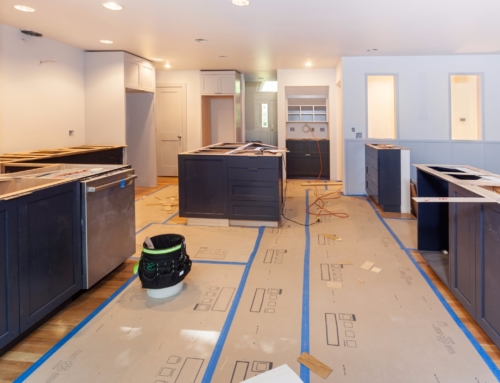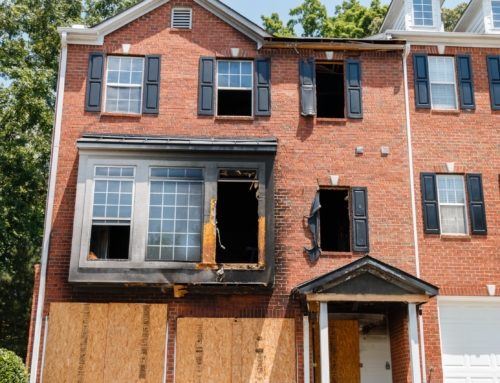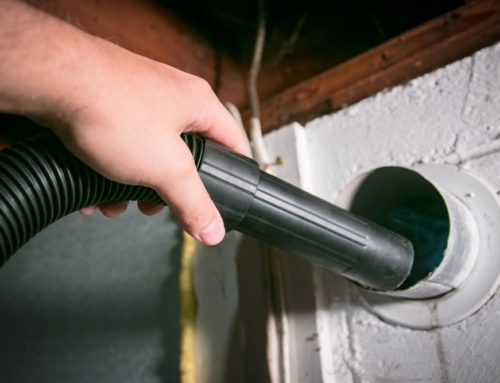One of the hardest truths a homeowner faces is just how expensive remodeling is, and how important it is to save on home remodeling.
Nationally, a roof can cost $18,000, a major kitchen remodel runs at $54,000 and a bathroom remodel is $16,000, according to Remodeling Magazine.
But you can save on almost any home remodeling project by planning before paying, buying materials creatively, and getting your hands dirty.
So if you’re trudging forward with some remodels this summer, or planning for the fall when the kids are back in school, think about these five ways to save money on home remodeling.
1. Build in a 20 percent cushion
This isn’t necessarily a cost-saving tip, but a budget (and sanity) saving tip to start you in the right direction. Almost every renovation goes over budget due to some unforeseen circumstance, so it’s better to be prepared than surprised.While that 20 percent cushion may mean your finishes aren’t as fancy or you sacrifice some space, it’s worth the peace of mind that you can afford this renovation.
2. Employ more efficient, modern design
Homes that were built 50 or 100 years ago aren’t used in the same way now as they were then so the design for today’s home cooks can be bulky and inefficient. But ignore the instinct to build bigger, designer Carolyn Leonhardt told Remodelista, because big kitchens and bathrooms are often unnecessary. Instead of blowing out walls and expanding the space, focus on design that would make the space function more efficiently. You’ll feel like you gained space without the expense of actually adding on. Plus, by sticking with the original bones and not moving around the plumbing or electric outlets, you can save thousands. Moving the kitchen sink can cost up to $2,000, and moving a toilet just 3 feet can cost between $500 and $1,000.
3. There are plenty of ways to get recycled materials
This Old House has a great tip for saving money on materials: contact a ReStore. Habitat for Humanity operates about 400 Restores around the country, which offer bargain prices on materials salvaged from home remodels. ReStore staff can even take a look at your materials before your demolition so you can take a charitable tax credit by donating them. Then head over to the store to find materials for your new kitchen. You can also check out building supply auctions (try here) and ask for leftover materials from your contractor. Keep in mind that not all contractors will work with rehabbed materials though, so make sure you keep open lines of communication with your builder.
4. Get specific about products
The National Association of the Remodeling Industry says the number one way to decrease costs is through product choices. Give yourself enough time to decide on your desired look and then find a way to do it for less. Choosing everything you want to include from appliances to light fixtures will also more narrowly define your budget and therefore your bid. This will allow your contractor to develop a more specific budget with less surprises and prevent expensive night-before decisions on products.
5. Help out (or get help)
There are actually contractors who offer consulting, or let you work alongside to reduce costs. They’re rare, but they’re out there, and you can also ask your contractor if they offer anything like that. You can also do your demo (as long as you’re not knocking down weight-bearing walls; think along the lines of ripping out cabinets) or provide transportation. If you can find ways to pick up and transport materials or garbage, you can save big, even if it means doing a little investing in a utility trailer or renting trucks by the hour from a big box home store.
Above all else, having a firm vision and a good general understanding of how each step will get done, then looking for any cost-saving alternatives, will lead you down the remodeling path with a few extra bucks in your pocket.







I’m much surprised to find such affordable ideas for home remodeling. By following these homeowners can save more on their home remodeling. Thanks for sharing!!
From my applied knowledge and experience having owned and remodeled several residences and having worked construction decades ago…
1. Build in a 20 percent cushion into the budget. Before the cushion, however, develop the budget from the detailed requirements.
A 20 percent budget cushion- a great idea, but more importantly, create a realistic budget based on extensive research of the project’s requirements. Only the homeowner truly knows the desired end result of the remodel, and the homeowner must decide what funds are available for the project.
2. Employ more efficient, modern design. What does this mean? Every home and every homeowner needs a kitchen fact specific to their requirements. The homeowner’s requirement development process creates a plan that can be discusses with contractors, suppliers, and designers.
3.’There are plenty of ways to get recycled materials.’
No. there isn’t. I have visited many ‘architectural salvage’ type facilities, and generally speaking, the materials available on any given day are unusable for a remodeling project, especially for a budgeted, requirement based renovation. Why? Because the daily offerings will not satisfy the plan’s requirements.
A much more productive and cost efficient choice finds the homeowner researching and discovering the ‘best-fit’ materials at the best price. The ‘architectural salvage’ materials may be cheap, but then the contractor must modify them to fit the project, or unforeseen damage in the cartons, or the inexpensive paint bleeds. It’s cheap for a reason.
4. ‘Get specific about products…Choosing everything you want to include from appliances to light fixtures will also more narrowly define your budget and therefore your bid.’ Yes, this arises as the end result of the extensive research, planning, and requirement development.
Yet this directly contradicts #3.’There are plenty of ways to get recycled materials.’ The author posits that ‘architectural salvage’ stores will save the homeowner oodles of cash, yet in the same breath directs that an individual should plan specific products.
5. Help out (or get help)
‘There are actually contractors who offer consulting, or let you work alongside to reduce costs. They’re rare, but they’re out there, and you can also ask your contractor if they offer anything like that. You can also do your demo (as long as you’re not knocking down weight-bearing walls; think along the lines of ripping out cabinets) or provide transportation.’
I know dozens of contractors, have hired many for remodeling projects. I don’t know a single contractor who would allow the homeowner to demolish, and even more importantly, would reduce the project’s cost even if the contractor allowed it.
Unless the homeowner knows how to distinguish a load bearing wall, identify the location of electrical wiring or plumbing within a wall, possesses the necessary safety equipment (Personal Protection Equipment, or PPE) with the proper training, and owns the right tools for the job, the homeowner can damage the project costing far more than the cost of the contractor demolition. The physical injury cost to the amateur seeking to save a few dollars could easily again cost far more than the contractor performing the demolition. A nail in the foot, a wood splinter in the eye, a wrenched back when the sledge hammer slips.
During the demolition the contractor will prep the area as much as possible for the renovation, saving time and therefore cost. The homeowner doesn’t possess that knowledge. The few dollars the homeowner believes will be saved with the amateur demolition will simply be charged elsewhere.
‘If you can find ways to pick up and transport materials or garbage, you can save big, even if it means doing a little investing in a utility trailer or renting trucks by the hour from a big box home store.’
No, you can’t. The TV remodeling shows are not realistic. And unless you have experience with handling old drywall, wood, and general debris, you will not save any money. Do you know how to dispose of contractor waste? It can’t go with the household garbage! Do you know the location of the nearest landfill? Do your know the cost? It’s not cheap.